Best Day To Send Press Release
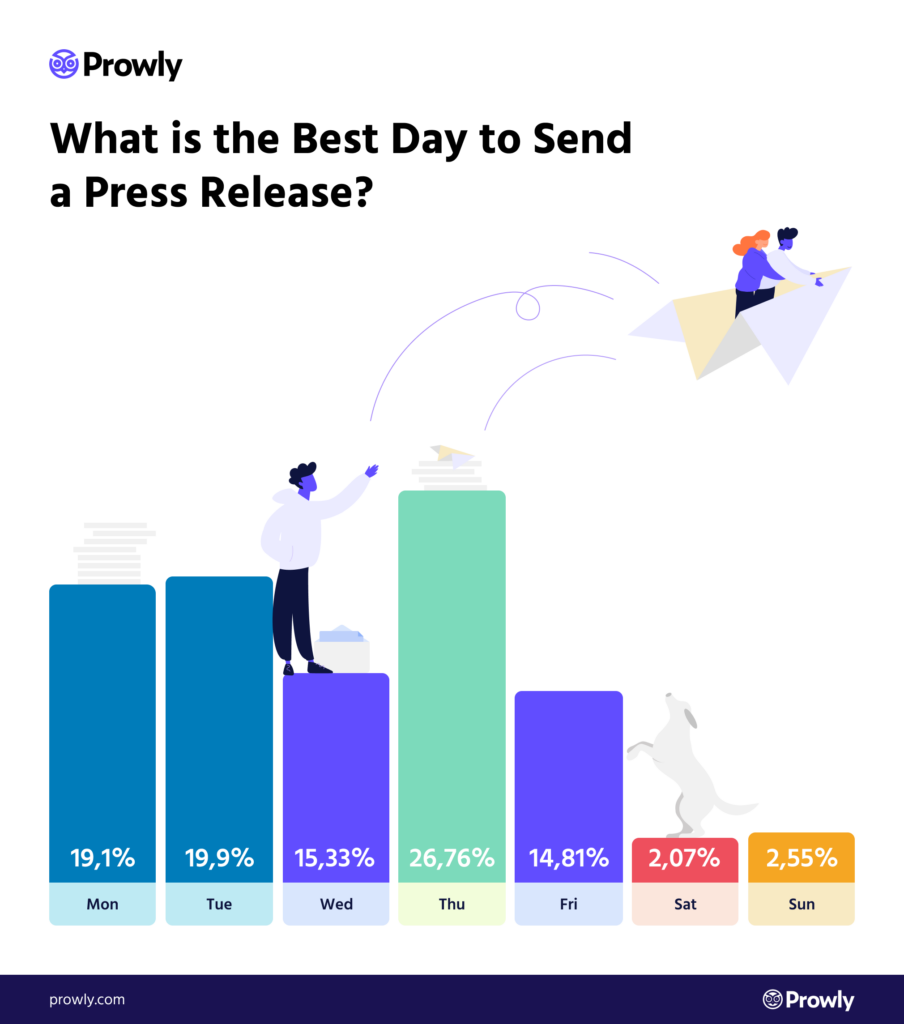
In the relentless 24/7 news cycle, breaking through the noise to ensure a press release lands in the right hands – and more importantly, gets noticed – is a constant challenge for public relations professionals. The timing of a press release distribution can be the difference between widespread media coverage and complete obscurity.
The optimal day and time to send a press release is a complex equation influenced by various factors, including industry, target audience, and news cycle trends. While there's no guaranteed formula for success, data-driven insights and expert opinions suggest that Tuesday and Wednesday mornings often provide the highest likelihood of media engagement. This article delves into the nuances of press release timing, examining the evidence behind these recommendations and exploring alternative strategies for maximizing impact.
The Case for Mid-Week Morning Releases
Several studies and industry reports point to Tuesdays and Wednesdays as the most effective days for press release distribution. Data compiled by organizations like PR Newswire and Business Wire consistently show higher engagement rates, including opens, clicks, and media pick-up, on these days compared to Mondays, Thursdays, and Fridays.
The rationale behind this trend is multifaceted. Mondays are often dominated by journalists catching up from the weekend and tackling urgent tasks. Towards the end of the week, particularly on Fridays, newsrooms tend to thin out as staff prepare for the weekend, reducing the likelihood of a press release receiving adequate attention.
Early mornings, specifically between 8:00 AM and 10:00 AM Eastern Time, are often cited as prime times. This window allows journalists ample time to review the release, conduct any necessary follow-up, and incorporate the news into their daily reporting schedules. It’s also before the afternoon news cycle kicks into high gear.
Data-Driven Insights and Expert Opinions
PR Newswire's research, analyzing millions of press releases, consistently identifies Tuesday mornings as a peak time for engagement. Their data reveals a correlation between mid-week releases and increased media coverage, attributing it to journalists having a more focused and receptive mindset during these times.
Shelly Spector, President of Spector & Associates, a public relations firm, emphasizes the importance of understanding media routines. "Journalists are often planning their content calendars weeks in advance," she says. "Reaching them early in the week gives them the opportunity to consider your news as they finalize their editorial plans."
However, Spector cautions against blindly following general recommendations. “The best day to send a press release depends heavily on the specific news and the target audience. For example, a tech-related announcement might be better suited for a late Wednesday or Thursday release, as tech journalists often work on different schedules.”
Beyond Tuesday and Wednesday: Alternative Strategies
While mid-week mornings are generally considered optimal, several alternative strategies can be effective depending on the specific circumstances. Timing a release to coincide with a relevant industry event or conference can significantly boost its visibility. For example, announcing a new product launch at a major trade show ensures that journalists and industry analysts are already focused on the related topics.
Releases related to financial results or market performance are often timed to coincide with earnings reports, regardless of the day of the week. Similarly, crisis communication releases need to be issued immediately, regardless of the day or time.
Content personalization also plays a crucial role. Tailoring the press release to specific media outlets or journalists increases the likelihood of engagement, regardless of the day it's sent. This involves researching journalists' past work and tailoring the release to their specific interests and reporting styles.
The Impact of Global Time Zones
For organizations with a global reach, considering different time zones is essential. Distributing a press release at 9:00 AM Eastern Time might not be optimal for European or Asian media outlets.
Some PR professionals recommend staggering release times to coincide with the start of the business day in different regions. This ensures that journalists in each region have the opportunity to review the release during their prime working hours.
Social media amplification is another important consideration. Sharing the press release on social media platforms at strategic times can extend its reach and drive traffic to the official announcement. This includes scheduling social media posts to coincide with peak engagement times on platforms like Twitter and LinkedIn.
Measuring and Adapting Your Strategy
The key to optimizing press release timing is continuous measurement and adaptation. Monitoring engagement metrics, such as open rates, click-through rates, and media mentions, provides valuable insights into what works best for different types of news and target audiences. Utilize analytics tools offered by press release distribution services to track the performance of each release and identify trends over time.
A/B testing different release times and days can also help refine your strategy. Experiment with different approaches and track the results to determine which timing patterns yield the best results.
The media landscape is constantly evolving, and what worked last year might not be effective today. Staying informed about industry trends and adapting your strategy accordingly is crucial for maximizing the impact of your press releases.
Conclusion
While Tuesday and Wednesday mornings are generally considered the best times to send a press release, the optimal timing is ultimately a matter of understanding your target audience, industry trends, and news cycle dynamics. Data-driven insights, combined with expert opinions and continuous measurement, are essential for developing a successful press release distribution strategy. By carefully considering these factors and adapting your approach based on performance, you can significantly increase the likelihood of your news being heard above the noise.

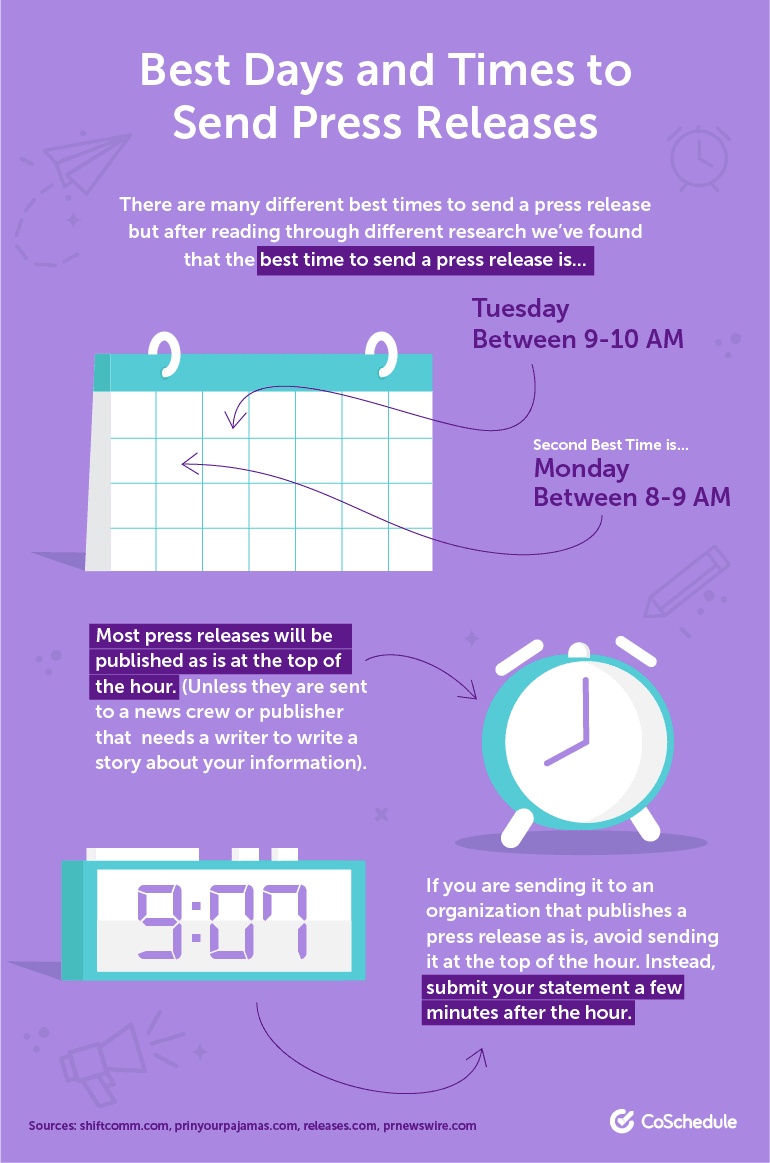


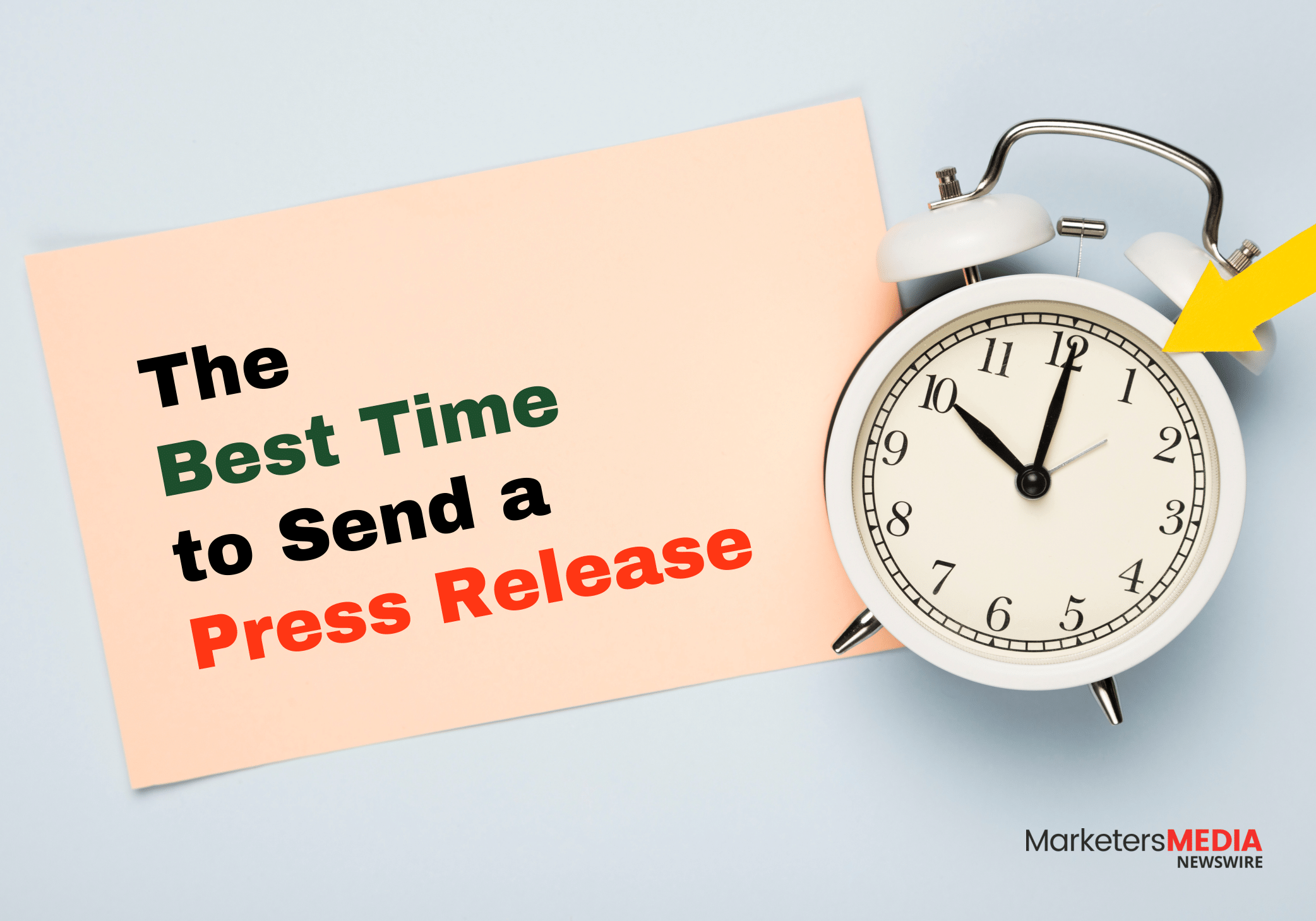



![Best Day To Send Press Release How to Send a Press Release in 3 Quick Steps [2025 Update]](https://cdn.uc.assets.prezly.com/0098962e-bfd6-4260-967f-bf8d6b2c0423/-/crop/3200x1678/0,0/-/preview/-/resize/3000/how to write great press release quotes kate bystrova prezly.png)
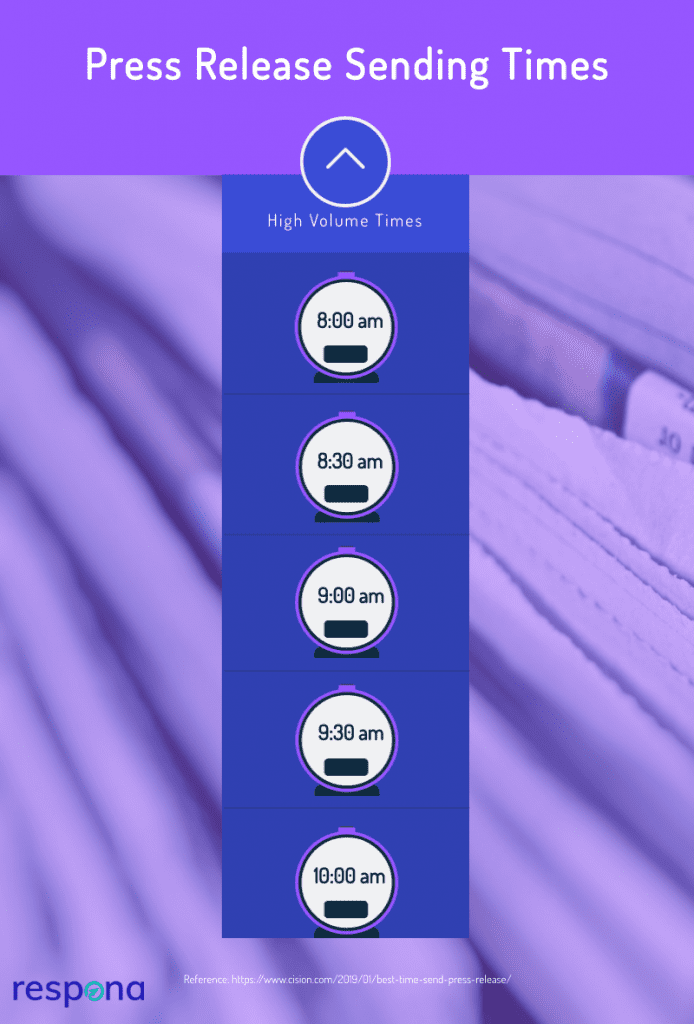
![Best Day To Send Press Release The Best Time & Day to Send a Press Release [Updated for 2025]](http://prowly.com/magazine/wp-content/uploads/2023/07/The-best-day-to-send-a-press-release-1024x562.png)
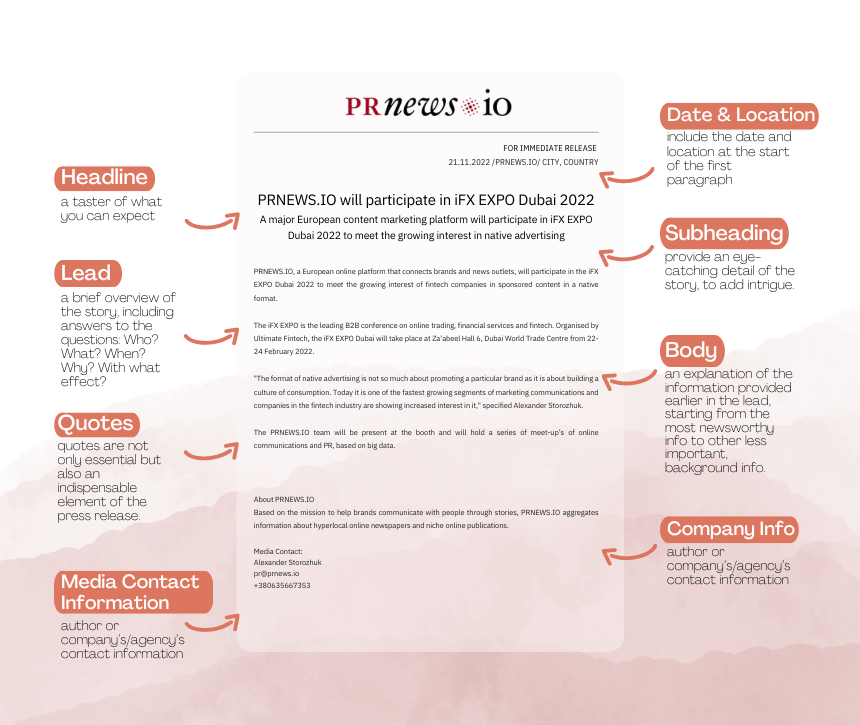
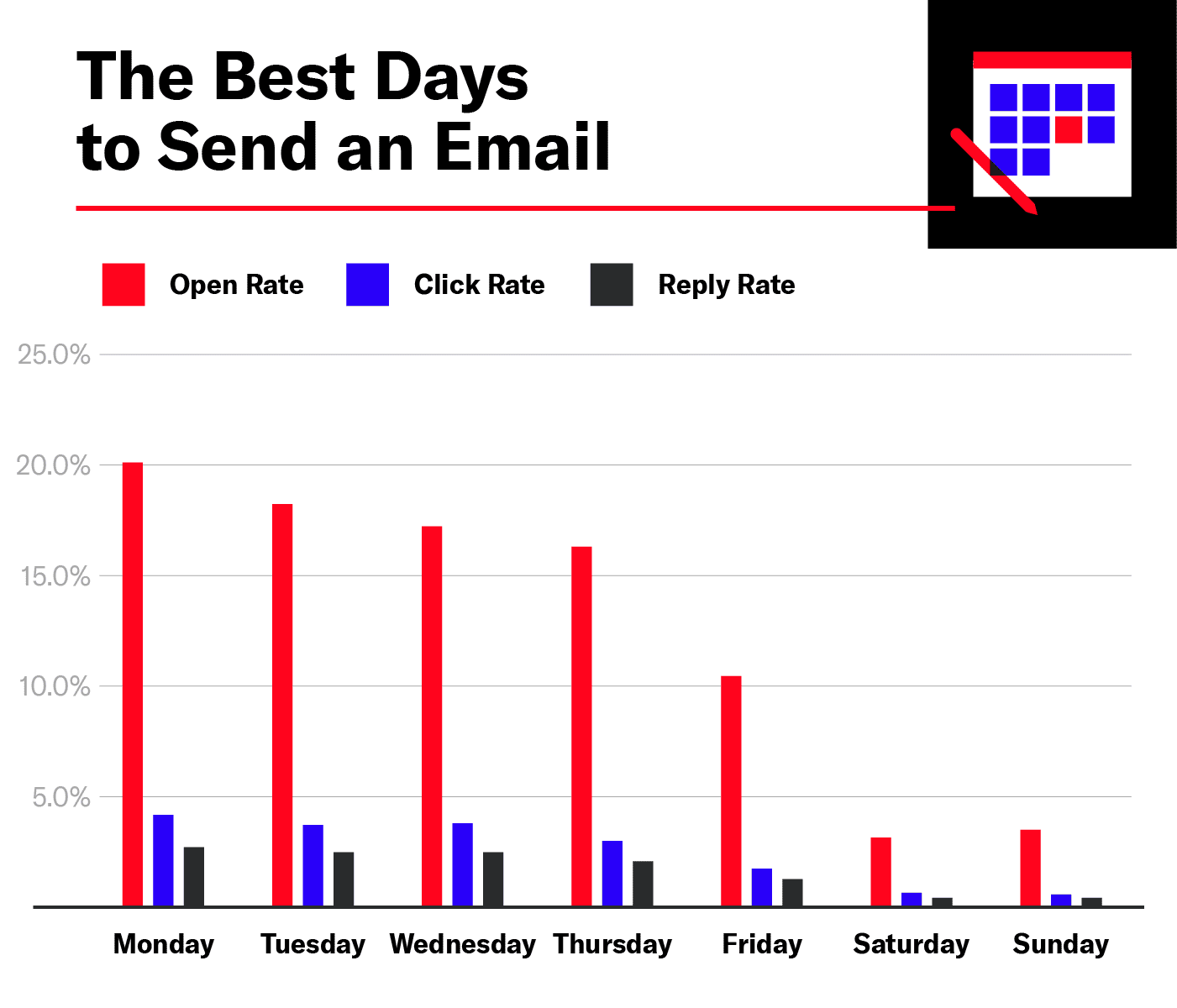
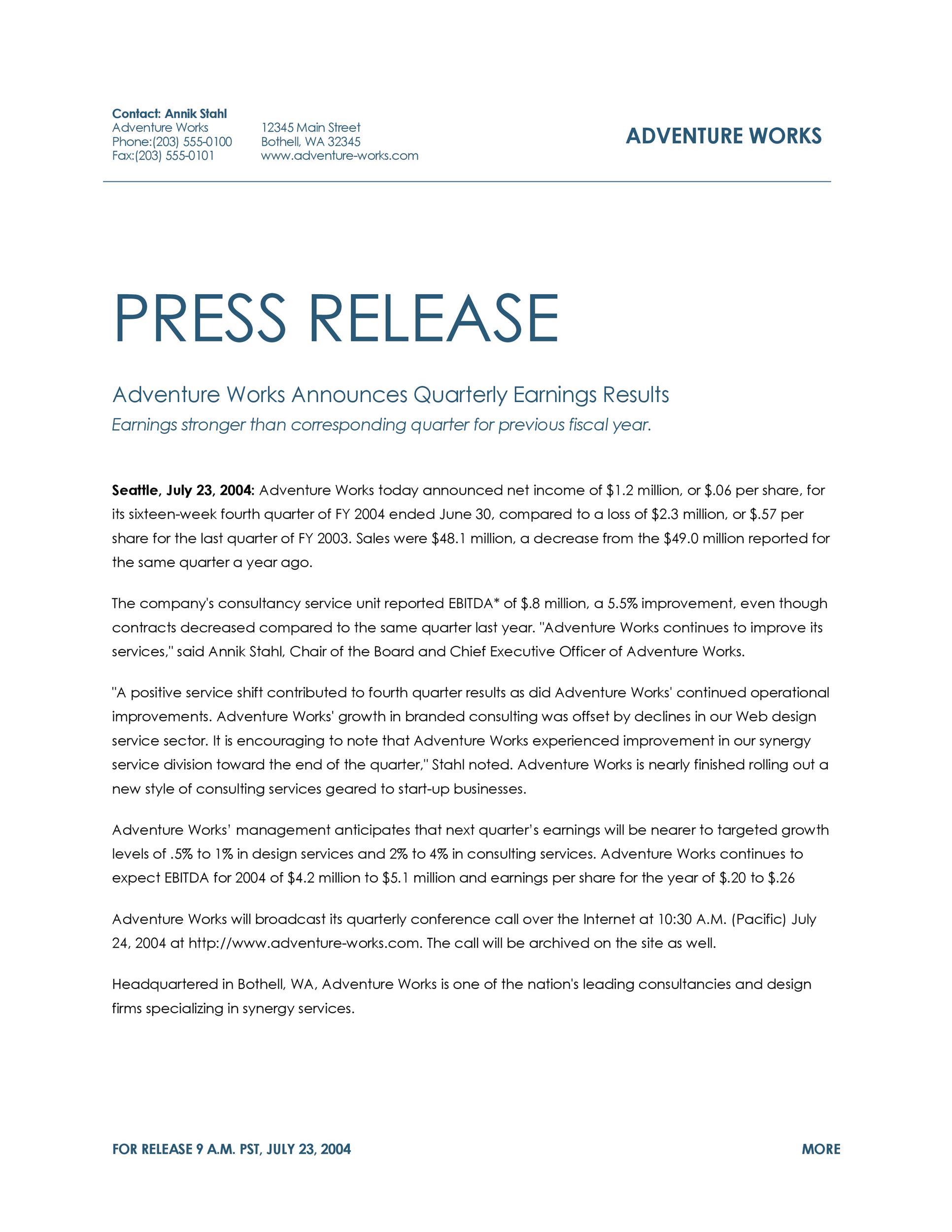

![Best Day To Send Press Release 5 Tips to Write a Killer Press Release [+ Free Template] - Zen Media](https://zenmedia.com/wp-content/uploads/2022/07/press-release-template-1638x2048.jpg)
![Best Day To Send Press Release Best Press Release Examples [Organized by Type] | PRLab](https://prlab.co/wp-content/uploads/2022/09/press-release-examples-crisis-pr.png)

